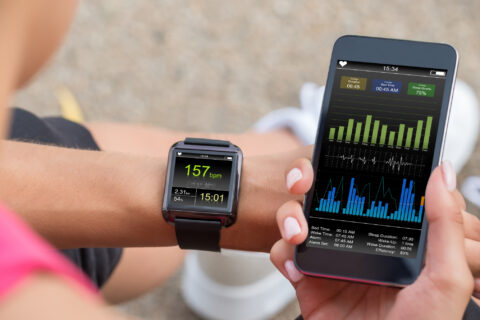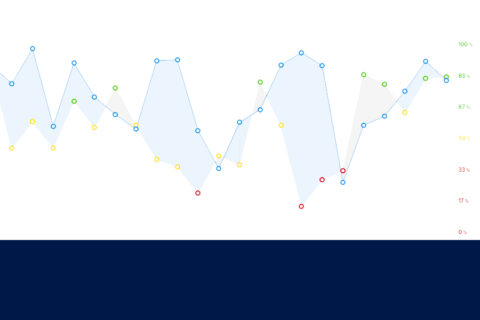In his groundbreaking book, Understanding Media, Marshall McLuhan explains that a new medium starts by imitating what already exists before finding its unique expression. Ultimately, the medium shapes the content or “message.” A poignant example is the way Twitter has changed political campaigning.
In endurance sports, something similar has played out over the past decade. First Strava paved the way for “social training media” in cycling, followed by tools like Zwift and Garmin Connect.
True to McLuhan’s theories, Strava started simply as a way to virtually compete with one another. But it quickly evolved into an entirely unique social platform complete with kudos and Facebook-like rider feeds.
But if the “message” here is training, we’re only just starting to see how the medium is changing that message. And the question becomes whether these different apps and tools help or hurt our training.
The preliminary answer appears to be: It depends on how you use it.
Is Strava a legitimate training tool?
When it comes to peer-reviewed research on why and how people use Strava, for example, the data is very limited. Two studies led by Jeroen Stragier at Ghent University in Belgium, who studies communication technologies, expand on McLuhan’s media theories. Stragier studied nearly 400 Strava users to understand the reasons they use the tool.
Drawing on a theory that suggests people will use the tool that best meets their needs, Stragier identified three needs that drive Strava: self-monitoring (such as goal setting and training analysis), social support, and enjoyment (or, as Stragier refers to it, “hedonic motivation”). The study found that self-monitoring drove cyclists to try Strava, but social aspects and enjoyment kept them using it.
Still, the impact these tools have on our training is yet to be fully studied. Central to that question, however, is a key aspect of the hedonic side of social training tools—something called gamification. To be clear, there’s nothing wrong with gamification. Racing and group rides are both ways to gamify cycling.
“This is why we all race. We’re competitive,” says Grant Holicky of Forever Endurance Coaching in Boulder. “When you put that competition element in, it’s fantastic because it drives an effort level that you probably don’t see otherwise. The issue with it as a coach is that there’s a time and a place [when it’s appropriate].”
How to use these apps effectively
What Holicky cautions is that tools like Strava and Zwift allow us to gamify every ride. The effect this has on training may be partially understood by the results of the third Strava study. Published in 2013 by researchers at the University of Pisa, Italy, it looked at data from nearly 30,000 Strava users. Where most studies use only 10 to 12 cyclists, this was the first large scale study of training trends.
The study looked at subjects’ weekly effort using the training stress score (TSS) formula developed by Dr. Andy Coggan and Hunter Allen. Performance was determined by looking at changes in vertical ascent rates (VAM) on Strava segments.
The study made two key discoveries. The first was that there was very little correlation between effort and performance—training harder didn’t make the subjects faster.
Second, and more importantly, the only cyclists to see improvements in performance were the ones to periodize their training—building in periods of hard training to overcompensate, and then followed by periods of rest.
Their VAM scores during the race season were ultimately higher than athletes who started training hard in November and had a higher average weekly TSS. In other words, to set a PR on a Strava segment, an athlete should be selective about when he or she hits those segments hard.
How to periodize your social training
To maximize your training, Strava and other social training media needs to fit into a structured training plan. When an athlete puts Strava segments ahead of training, Holicky has a clear message: “I tell my athletes after they’ve crushed a segment, ‘Remember this for the days your legs aren’t great, but let’s get back on task. Let’s get back to the plan.’”
Here are some suggestions on how to make Strava a valuable part of your training.
Don’t hit every segment 100 percent
Nowadays, Strava segments riddle nearly every ride you do. Perhaps you intuitively know when you’re on one; the trick is to resist the urge to take each one at 100 percent. It’s better to go all out just a few times per year to gauge your level.
Don’t get stuck in the middle
When you frequently hit Strava segments or Zwift group rides hard, multiple times per week, it leads to diminishing returns—fatigue prevents you from hitting the intensity you need and you end up training neither hard nor easy. That middle place limits fitness gains.
Pick a day to race the segments
Holicky emphasizes that riders who can’t resist hammering segments, even if they have a coach and a plan, ultimately have problems with their fitness. If you must hunt, pick a few segments and dedicate a day each week when you race them. It can, in fact, be effective training.
“One day per week I want intensity. I want a big hard ride and I tell my athletes to go Strava hunting,” Holicky says. “Something like Zwift can be used multiple times per week, but again, with planning and specificity.”
Use segments as a benchmark
Chasing Strava segments also offers real training value simply by documenting your progress over time. If you time trial a specific segment, such as a 20-minute climb, a few times each year, you have a great way to track your progress. Yes, you could hit the lap button on your computer, but tools like Strava allow you to filter your results and see your times and power numbers over time—for example, you could reference what year you set your PR and how you measure up now.
Don’t read into one bad effort
Holicky believes that segments are very effective for tracking progress year over year, or within a one- to two-month training block. But he warns that a lot of factors affect your performance on a given day, including wind, temperature, and fatigue. This presents a danger for athletes. “As soon as they have one slower time trial climb, their first reaction is, ‘I must be unfit,’” Holicky says. The response is often to train harder; but if they were slower because they were fatigued, they will dig themselves into a hole.
Avoid the hidden danger of short segments
“I think a lot of athletes look at these 30-second sprints or these one-minute hills and think it’s short and it’s not going to do that much,” Holicky says. “But when you’re operating in that VO2max range of 120 to 150 percent of your threshold, the intensity is very extreme and it’s going to have a huge effect on fatigue.”
VO2max work requires lots of recovery time; if you don’t get it, you’re likely to overreach instead of improve. As a comparison, during a big build week, the top pros that Holicky coaches limit intense efforts like these to once or twice per week.
A single effort brings fatigue but not the gains
One of the reasons Holicky likes his athletes to pick a “Strava day” is because a single hard effort generates fatigue without the right adaptations. In fact, for VO2max work, he prefers repeated efforts with short recoveries such as repeats on a one-minute climb or segment. “That one huge effort is building power and sport-specific strength on the bike, but it’s not building fitness and repeatability,” he says. In a race, everyone can go hard once.
Take advantage of the gamification
One of the purposes of Strava is to build a competitive spirit among friends. Even riding alone, you can get a virtual race fix. This is especially appealing to riders with a competitive spirit who don’t like organized competition. Holicky feels that tools like Zwift are great for motivation in winter months when riders are stuck inside or riding alone.
Go beyond segments
Many people effectively use Strava by looking beyond segments. For instance, it is handy for goal setting and to track weekly progress. Likewise, for many the social motivation is very powerful. While traditional training tools can be very individual, Strava lets you get out of your own head and share your training experience with a broader community. That can be highly motivating.
References
- Cintia, P., Pappalardo, L., & Pedreschi, D. (2013). “Engine matters” : a first large scale data driven study on cyclists’ performance. 2013 IEEE 13th International Conference on Data Mining Workshops, 147–153. Retrieved from https://doi.org/10.1109/icdmw.2013.41
- Stragier, J., Abeele, M. V., Mechant, P., & Marez, L. D. (2016). Understanding persistence in the use of Online Fitness Communities: Comparing novice and experienced users. Computers in Human Behavior, 64, 34–42. Retrieved from https://doi.org/10.1016/j.chb.2016.06.013
- Stragier, J., Evens, T., & Mechant, P. (2015). Broadcast Yourself: An Exploratory Study of Sharing Physical Activity on Social Networking Sites. Media International Australia, 155(1), 120–129. Retrieved from https://doi.org/10.1177/1329878×1515500114






